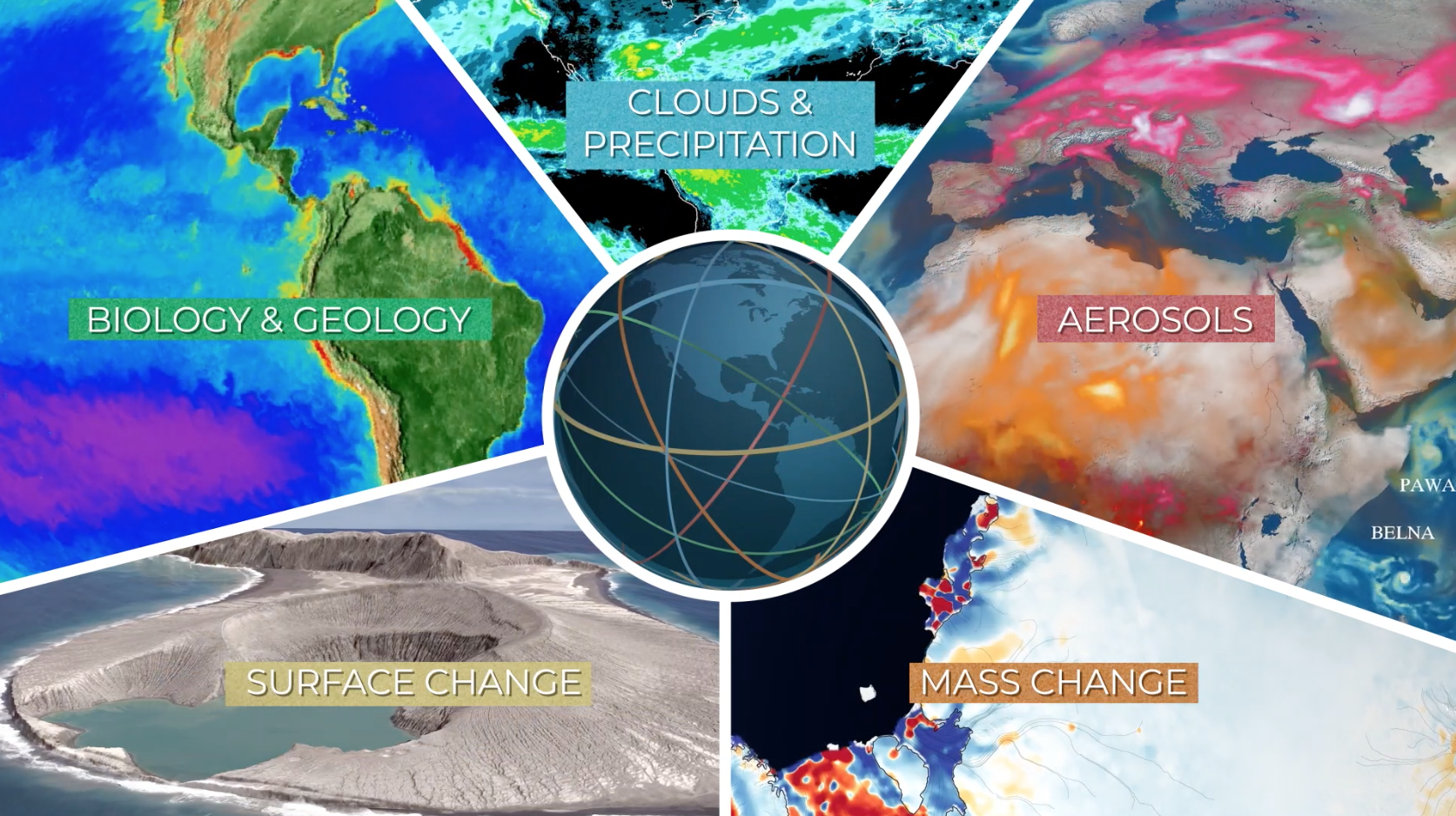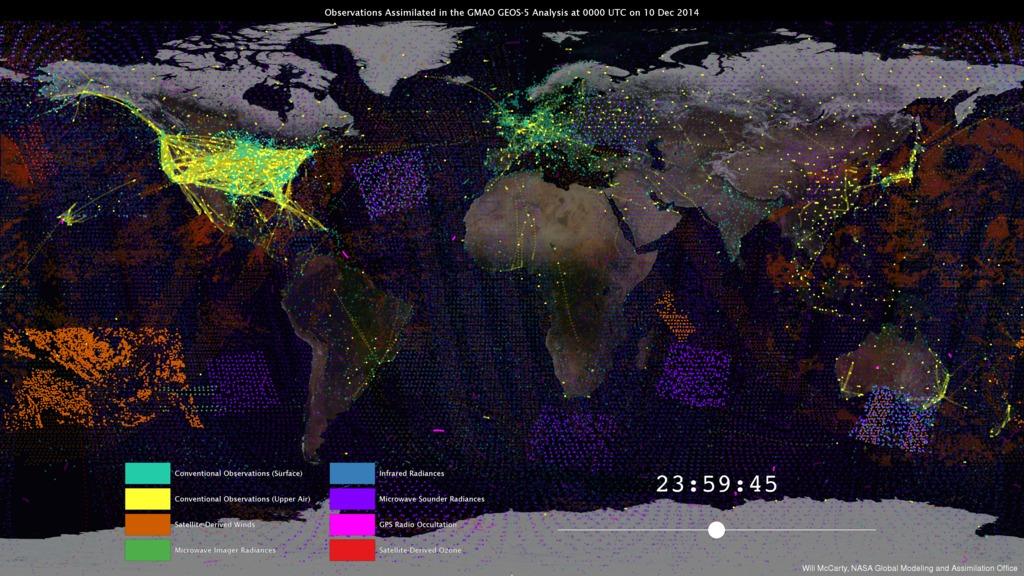How Does NASA Model Atmospheric Patterns?
Better and faster computer have improved how we model and study Earth. More information is the other piece of the puzzle improving how we model and forecast our planet’s atmosphere.
Since 1980, the tenth anniversary of Earth Day, the number of observing systems, which include satellites, weather balloons, and even instruments flown on commercial airlines, have dramatically increased -- from 175,000 observations gathered over a six-hour period in 1980 to around 5 million observations in 2018.
The Global Modeling and Assimilation Office (GMAO) at NASA Goddard Space Flight Center uses the Goddard Earth Observing System (GEOS) modeling and data assimilation system to produce estimates of Earth’s atmospheric state by combining short-term forecasts with observations from numerous observing systems. The GEOS modeling system helps us see Earth more clearly and better understand our atmosphere and how it changes.
Credits
Please give credit for this item to:
NASA's Goddard Space Flight Center
-
Producer
- Katie Jepson (USRA)
-
Scientists
- Will McCarty (NASA/GSFC)
- Steven Pawson (NASA/GSFC)
-
Visualizer
- Trent L. Schindler (USRA)
-
Animator
- Will McCarty (NASA/GSFC)
Release date
This page was originally published on Friday, March 6, 2020.
This page was last updated on Wednesday, May 3, 2023 at 1:45 PM EDT.


